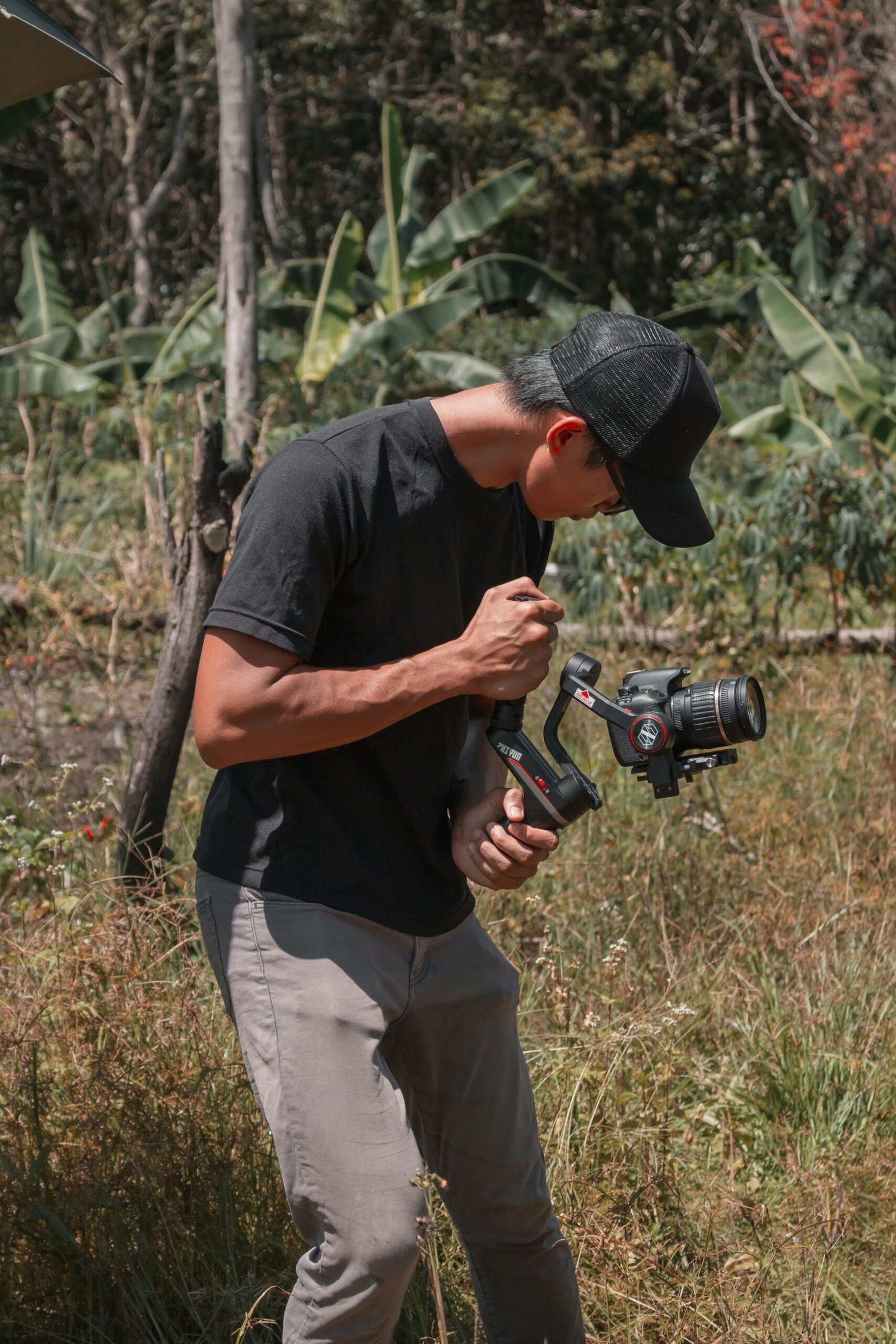Introduction to the Photography Industry
The photography industry has seen significant transformation and growth over the past few decades. Initially rooted in film and darkroom processes, the advent of digital technology has revolutionized how photographs are taken, edited, and shared. Today, the industry encompasses a wide range of niches, from traditional portrait and wedding photography to more specialized fields such as wildlife, sports, and fashion photography. This diversification presents a variety of opportunities for aspiring photographers to carve out their unique paths.
Furthermore, the demand for professional photographers has remained robust despite the proliferation of smartphone cameras. While amateurs have the tools to capture high-quality images, the skills and artistic vision that professional photographers bring are highly valued in both personal and commercial contexts. Corporations, media outlets, and advertising agencies consistently seek professional photographers to provide high-quality visual content that resonates with their audiences.
One of the most significant influences on the industry’s evolution has been the rise of social media. Platforms like Instagram, Facebook, and Pinterest have changed how photographers market their services and showcase their portfolios. Social media not only serves as a stage for photographers to share their work but also acts as a networking tool, enabling them to reach potential clients and collaborators on a global scale. The instant feedback and engagement these platforms offer also drive photographers to continually refine and innovate their craft.
Overall, the photography industry today is dynamic and continually evolving, driven by technological advancements and changing consumer preferences. Aspiring photographers now have more tools and resources at their disposal than ever before, making it a promising yet competitive field. Understanding the industry’s current landscape is crucial for anyone contemplating a career in photography, as it provides a clearer picture of the opportunities and challenges that lie ahead.
Initial Financial Investment and Costs
Embarking on a photography career necessitates a significant initial financial investment. The cornerstone of this venture is the acquisition of high-quality professional cameras. Depending on the brand and model, the costs can range from a few hundred to several thousand dollars. Complementing the camera body, a variety of lenses is essential to capture different perspectives and styles, with prices fluctuating between several hundred to a few thousand dollars per lens.
Equally important is the lighting equipment, which ensures consistency and quality in various shooting conditions. Basic lighting kits can start around $200, but more sophisticated setups for studio photography may run into the thousands. Additionally, reliable editing software is indispensable for post-processing; industry-standard software, such as Adobe Photoshop and Lightroom, typically requires a subscription costing around $10 to $50 per month.
Beyond these core tools, other essential accessories include sturdy tripods ($100-$300), memory cards, batteries, and protective gear—all of which contribute to a seamless workflow. To establish a professional presence, creating an impressive portfolio is vital. This often involves the printing of high-resolution photographs, which can add up to a significant expense depending on the number and quality of prints made.
Marketing expenses should not be underestimated. Developing a professional website ranges from $500 to several thousand dollars, and ongoing maintenance requires a budget as well. Investment in social media marketing and online advertising ensures greater visibility and client outreach, with costs varying based on the scope and platforms employed.
Furthermore, the journey of becoming a proficient photographer is continuous. Investing in ongoing professional development through workshops, courses, and certifications is critical. These educational resources often come at a premium, but they are invaluable for staying abreast of the latest trends and techniques. All these expenditures combined underscore the considerable financial commitment required to successfully launch a career in photography.
Building a Solid Portfolio and Gaining Experience
Creating a professional portfolio is a crucial step for anyone aspiring to succeed in the competitive world of photography. A well-curated portfolio not only showcases your best work but also provides potential clients and employers with a glimpse of your unique style and technical capabilities. To build a diverse portfolio, it’s essential to include a variety of projects that demonstrate your versatility. This means incorporating different types of photography such as portraits, landscapes, event photography, and editorial work. Including diverse subjects and styles will highlight your adaptability and skill in various settings.
When starting out, it can be beneficial to undertake unpaid or low-paid work. While this might seem discouraging at first, it is an opportunity to gain valuable experience, expand your portfolio, and build a network. Collaborating with non-profit organizations, local businesses, and even friends and family can provide you with a range of subjects and scenarios to photograph. These projects not only enhance your skills but also add credibility to your portfolio, making it more appealing to potential clients.
In addition to practical experience, it’s essential to present your work in a polished and professional manner. Use high-quality prints or create a digital portfolio with a user-friendly interface. Online platforms and personal websites are excellent ways to display your portfolio to a broad audience. Remember to regularly update your portfolio with new work to reflect your growth and keep it fresh.
Networking within the photography community can also open doors to new opportunities. Attend photography exhibitions, join photography groups or clubs, and engage with other photographers on social media. These interactions can lead to collaborations, referrals, and a supportive community to help you navigate the challenges of a photographic career.
Building a solid portfolio and gaining experience are foundational steps that pave the way for a successful career in photography. By showcasing your versatility and continually improving your skills, you create a compelling narrative that attracts attention and establishes your presence in the field.
Marketing Yourself and Finding Clients
Starting out as a photographer necessitates a well-executed strategy to market oneself and attract clients. Networking plays a critical role in establishing connections within the industry. Attend photography workshops, art exhibitions, and industry conferences to meet potential clients and collaborators. Building a robust network can open doors to various opportunities that might not be accessible otherwise.
Social media is an indispensable tool for photographers. Platforms such as Instagram, Facebook, and Pinterest allow you to share your work with a global audience. Regularly posting high-quality images, engaging with followers through comments, and using relevant hashtags can significantly enhance your visibility. It is important to maintain consistency in your posts to keep your audience engaged and attract potential clients.
Creating a professional website is equally important. Your website serves as a virtual portfolio where potential clients can view your work, learn about your style, and read testimonials from previous clients. The website should be well-designed, easy to navigate, and optimized for mobile devices. Include an ‘About’ section where you share your story and a contact form to make it easy for visitors to reach out to you.
Online portfolios on platforms such as Behance and 500px are also valuable. These platforms allow you to showcase your work to a wider audience, and many potential clients visit these sites to find talented photographers. Ensure that your online portfolio is up-to-date and represents the best of your work.
Word-of-mouth referrals are incredibly potent. Providing excellent service and building strong relationships with your clients can lead to referrals and repeat business. Encourage satisfied clients to leave reviews and testimonials on your website and social media profiles. These will build credibility and trust with potential clients.
Effective communication with potential clients is crucial. Promptly respond to inquiries, be clear about your services and pricing, and ensure that you understand their needs and expectations. Detailed and professional communication can make a significant impact on securing new clients.
Implementing these strategies with dedication and consistency can help you market yourself effectively as a photographer, attract new clients, and ultimately decide whether you can transition to photography full-time.
Balancing a Photography Career with a Day Job
Beginning a career in photography while maintaining a day job presents a distinct set of challenges and benefits. The primary advantage of retaining a stable job is the financial security it provides, which is particularly crucial during the initial stages of a photography career when income could be unpredictable. This security allows you to invest in necessary equipment, marketing, and continued education without the stress of immediate financial returns.
However, juggling both roles requires exceptional time management and organizational skills. Prioritizing tasks is essential. Start by setting clear, achievable goals for your photography business. Break these goals into smaller tasks and create a schedule that allocates time for your day job, photography work, and personal downtime. Utilizing tools such as calendars, to-do lists, and project management apps can help keep you on track.
Effective time management also includes identifying peak productivity periods. If you are more alert and creative in the mornings, dedicate that time to your photography tasks. Conversely, if your best work comes in the evenings, adjust your schedule accordingly. This approach ensures that you are channeling your energy during optimal times, leading to higher-quality work in both your day job and your photography undertakings.
Gradually transitioning from part-time to full-time photography is a low-risk approach. Begin by taking photography jobs that fit within your schedule, gradually increasing your workload as your client base grows and your skills improve. When you reach a point where your photography income consistently matches or exceeds your day job earnings, you may consider transitioning to photography full-time.
Balancing a photography career with a day job demands diligence and strategic planning but offers a safety net that can be invaluable as you establish yourself in the competitive field of photography. With a well-structured approach and patience, the delicate balance can lead to long-term success and sustainability in your photography career.
Overcoming Common Challenges
Embarking on a career in photography presents several common challenges that can deter newcomers. One of the foremost obstacles is intense competition. The photography market is saturated with talented individuals, making it difficult for newcomers to distinguish themselves. To overcome this challenge, developing a unique photographic style and consistently producing high-quality work is essential. Building a robust portfolio that showcases versatility and creativity can also attract potential clients.
Another significant concern for budding photographers is inconsistent income. Unlike salaried positions, photography work can be unpredictable, with varying demand throughout the year. It is prudent to diversify one’s income streams by offering various services such as event photography, portrait sessions, and stock photo sales. Additionally, maintaining financial discipline by saving during high-revenue months can help cushion lean periods.
Creative burnout is an inevitable challenge that many photographers face. The pressure to constantly churn out innovative work can lead to exhaustion and a decline in creativity. Taking regular breaks and pursuing personal projects can rekindle inspiration and prevent burnout. Interacting with other photographers, either through workshops or online communities, can also provide fresh perspectives and new ideas.
Resilience and perseverance are indispensable qualities for overcoming these hurdles. The journey to establishing a successful photography career is often long and fraught with setbacks. Staying motivated and inspired can be achieved by setting realistic goals and celebrating small achievements. Continuous learning and adapting to the ever-evolving trends in photography can also keep the passion alive.
In conclusion, while starting out as a photographer can be challenging due to competition, inconsistent income, and creative burnout, these obstacles are surmountable. With dedication, a strategic approach, and a supportive community, aspiring photographers can navigate these challenges and build a fulfilling career in photography.
Understanding the Legal and Business Aspects
Starting out as a photographer involves more than just a passion for capturing moments; it requires a solid grasp of both legal and business aspects to ensure long-term success. One of the initial steps is obtaining the necessary licenses and permits. Depending on your location, you may need a business license, sales tax permit, or even special permits for operating in certain areas. It is crucial to check with local regulatory bodies to understand the specific requirements in your jurisdiction.
Another fundamental aspect is understanding copyright laws. As a photographer, your images are your intellectual property, and knowing how to protect them is vital. Copyright laws grant you exclusive rights to your work, enabling you to control how your images are used and distributed. Registering your photographs with the appropriate copyright office can provide additional legal recourse in cases of infringement.
Setting up a business entity is another important consideration. Whether you opt for a sole proprietorship, limited liability company (LLC), or another structure, having a formal business entity can offer personal liability protection and potential tax advantages. Consulting with a financial advisor or attorney can help determine the best structure based on your individual circumstances and goals.
Creating comprehensive contracts for clients is also essential. Contracts not only protect your interests but also set clear expectations for the scope of work, payment terms, and usage rights. A well-drafted contract helps prevent misunderstandings and ensures that all parties are on the same page, fostering a professional and trusting relationship with your clients.
In addition to these legal considerations, having business acumen is crucial. Successful photographers often possess strong skills in marketing, financial management, and client relations. Investing time in learning these areas or seeking mentorship can greatly enhance your ability to sustain and grow your photography career beyond its initial stages.
Conclusion: Weighing Your Options
Starting a career as a photographer can be an exciting yet challenging journey. Throughout this blog post, we’ve explored various aspects such as the financial stability offered by a day job, the initial investments required for photography equipment, and the fiercely competitive market. While the allure of turning a passion into a profession is undeniable, it’s imperative to approach this decision with careful planning and realistic expectations.
One of the key considerations is financial security. A steady income from a day job can provide a safety net while you gradually build your photography business. This dual approach allows you to refine your skills, establish a client base, and understand the market dynamics without the immediate pressure of generating a full-time income solely from photography.
Furthermore, the initial investment in high-quality photography equipment and software can be substantial. Combining a day job with your photography pursuits can alleviate some of the financial strain and allow you to make more informed purchases. It also provides the flexibility to experiment and find your niche, whether it’s portrait, landscape, or commercial photography.
The competitive nature of the photography industry is another factor to consider. Building a reputable brand and a robust portfolio takes time and effort. By maintaining your day job, you afford yourself the luxury of time to build relationships and gradually gain recognition in the field. This phased approach can ultimately lead to a more sustainable and rewarding career in photography.
In essence, determining whether to pursue photography full-time or keep your day job is a deeply personal decision that hinges on individual circumstances. Weighing the potential rewards against the challenges is crucial. Whether you choose to take the plunge or adopt a more gradual approach, understanding the landscape and setting realistic goals will be essential to your success as a professional photographer.
Here are some resources that discuss the advantages and disadvantages of becoming a photographer:
- Becomeopedia – Pros and Cons of Being a Photographer: This resource provides a comprehensive overview of the benefits and challenges associated with a photography career, including aspects like flexible working hours, the creative nature of the job, and the high costs of equipment.
- Burban Career – Pros and Cons of Being a Photographer: This article explores the various pros and cons, such as the opportunity for creativity and job satisfaction, as well as the financial instability and competitiveness of the field.
- Photofocus – Building a Professional Photography Career: This source delves into the stress and burnout associated with photography while also highlighting the rewarding aspects of being self-employed and creative freedom.




